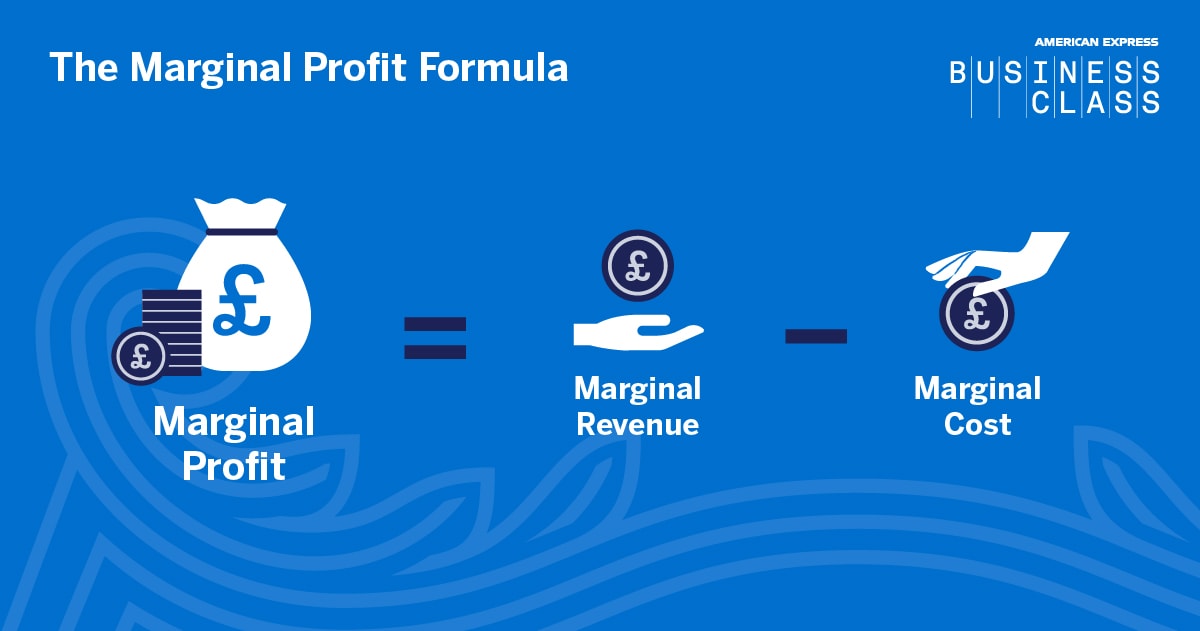Profit is typically measured to assess a company's overall financial stability. However, marginal profit is slightly different because it focuses on the money a business makes from selling one additional unit of a product or service.
"We look at marginal profit when introducing a new product to market," says Annabel Lui, Founder and CEO of Cutter & Squidge, a premium bakery gift brand that sells across the UK and has a flagship store in the heart of London. "We also look at marginal profit when planning production, as it helps us consider optimum batch size based on sales projections."
Let's look at how to calculate marginal profit and why it's a valuable metric for your company.
How to calculate marginal profit, with formula
To calculate marginal profit, you must deduct marginal costs from marginal revenue. The marginal profit formula can be seen below:
 |
Marginal revenue
Marginal revenue is the money your business makes from selling one additional unit of a product or service before the expenses involved in the production of that unit are deducted. It is calculated by dividing the change in total revenue by the change in quantity sold.
Marginal cost
Marginal cost refers to the amount it costs your company to produce one additional unit of its product or service. It considers variable costs, which change with production levels, rather than fixed costs that remain constant regardless of how many units are produced. Common variable costs include raw materials, packaging and delivery. For Cutter & Squidge, variable costs include labour and the cost of ingredients.
Marginal profit calculation example
Let's take the marginal profit calculation and work through an example. A carpentry firm has seen a steady rise in demand and would like to understand how much additional profit can be gained for each new wooden chair they produce.
The company's marginal revenue from each new chair sale before production costs are deducted is £125.
Its marginal cost of producing one new chair, including sourcing materials like oak and paying for skilled labour, is £75.
Marginal Profit = Marginal Revenue (£125) - Marginal Cost (£75) = £50
This means the company would earn £50 in marginal profit for each additional wooden chair sold. If this number was negative, it would mean the costs of producing the extra unit are higher than the revenue earned on selling that unit, and therefore not viable.
While companies typically avoid negative marginal profit, there are occasions when temporary negative marginal profit is unavoidable. For example, if you're launching a new product or entering a new market, you will likely incur larger upfront costs, which results in initial sales having a negative marginal profit.
"When a product is new, there are a lot of upfront costs like packaging that go into it," Lui shares. "When production starts on these new products, the first few sales will be at negative marginal profit."
Having a healthy cash flow when launching a new product is vital. That's why an American Express® Business Gold Card comes with payment terms of up to 54 days, which helps put a little more flexibility in your cash flow¹.
Marginal profit vs marginal return
"Marginal return refers to the additional return or benefit gained from making a small change in the use of resources or the level of activity," says Kevin Brent, Founder and Director of BizSmart, a business support provider. Marginal profit, on the other hand, quantifies the additional profit from producing one more unit of output.
For example, if hiring a new employee leads to an increase in production that exceeds the cost of hiring, the marginal return is positive. But if the increase in production is less than the cost of hiring, it's negative.
Marginal profit vs gross profit
Gross profit takes the total revenue of a company, or the amount earned from selling its goods or services, and deducts the costs associated with producing them, such as raw materials and packaging. This means some companies can have a positive gross profit, even if some of their products have a negative marginal profit.
“Gross profit provides a snapshot of overall financial health, whereas marginal profit offers insights into the profitability of incremental sales,” says Brent.
Marginal profit and economies of scale
As a company increases its production, it may start to reap the benefits of economies of scale. This is where marginal costs decrease and marginal profits increase. This can happen, for example, where higher production levels lead to bulk discounts with suppliers, or employee capacity is more efficiently utilised.
However, economies of scale aren't typically enjoyed indefinitely, notes Brent. "Eventually, a company will encounter the principle of diminishing returns, where adding more resources like staff or equipment, doesn’t lead to a proportional increase in output or profit,” he explains. When this point is reached, there is no additional profit earned for producing an extra unit.
In practice, what tends to happen is that companies maximise their profits by increasing production until marginal profit reaches zero. This is when marginal revenue and marginal costs are equal. Beyond this point, marginal profit will turn negative as the scale increases beyond its intended capacity. When this happens, a company may want to identify areas where efficiencies could be made to lower marginal costs. For example, bulk purchasing or investing in automation. Lui at Cutter & Squidge says she constantly reviews ingredients and process improvements to optimise marginal profit.
“Calculating marginal profit can help you understand how to set pricing, the optimal number of staff to hire, when to invest in more resources, expand into larger premises or additional sites, or even whether to go ahead with it at all,” Brent says. "This makes marginal profit a valuable compass for navigating business expansion and operational efficiency."
1. The maximum payment period on purchases is 54 calendar days and is obtained only if you spend on the first day of the new statement period and repay the balance in full on the due date. If you'd prefer a Card with no annual fee, rewards or other features, an alternative option is available – the Business Basic Card.



